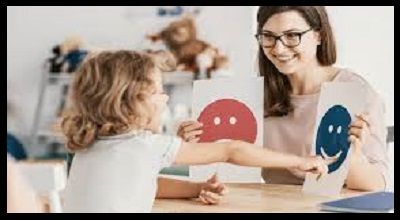Autism Focus and Learn
Now here, Helping Students With Autism Focus and Learn. Supporting students with autism in focusing and learning can be achieved through a combination of strategies, individualized approaches, and collaboration with educators, parents, and specialists. Autism is a spectrum disorder, so it’s important to tailor your approach to each student’s unique needs and abilities.
Here are some strategies to help students with autism focus and learn:
Create a Structured Environment:
- Provide a structured and predictable daily routine with clear schedules and visual supports like visual schedules or task lists.
- Use consistent classroom rules and expectations, and communicate them clearly to the student.
Visual Supports:
- Visual aids, such as visual schedules, social stories, and visual cues, can help students with autism understand expectations and transitions better.
Sensory Considerations:
- Be mindful of sensory sensitivities. Some students may be oversensitive to certain sensory inputs (e.g., noise, lights) or seek sensory stimulation (e.g., fidgeting, hand flapping). Provide sensory breaks or tools like fidget toys to help them self-regulate.
Individualized Education Plan (IEP):
- Collaborate with special education professionals to develop an IEP that addresses the student’s specific needs, goals, and accommodations.
Clear Communication:
- Use clear and concise language. Avoid idioms and figurative speech, as students with autism may interpret language literally.
- Provide visual supports, such as visual cues or communication devices, to assist with communication.
Positive Behavior Support:
- Implement a positive behavior support plan to reinforce desired behaviors and provide clear consequences for challenging behaviors.
- Use positive reinforcement strategies, like rewards, to motivate and engage the student.
Break Tasks into Smaller Steps:
- When introducing a new concept or task, break it down into smaller, manageable steps. Use visual supports to illustrate each step.
Specialized Instruction:
- Provide specialized instruction in areas where the student may struggle, such as social skills or executive functioning skills.
- Use evidence-based teaching strategies, like Applied Behavior Analysis (ABA), where appropriate.
Peer Support and Inclusion:
- Encourage peer support and inclusion to help the students with autism develop social skills and connections with their peers.
Sensory-Friendly Classroom:
- Create a sensory-friendly classroom environment with minimized distractions and a designated sensory space for students to regulate themselves.
Collaborate with Parents and Specialists:
- Maintain open communication with parents or caregivers and work together to address the student’s needs.
- Consult with specialists, such as speech therapists, occupational therapists, and behavioral analysts, to develop effective strategies.
Flexibility and Patience:
- Be flexible and patient. Autism can lead to variations in learning pace and style, so adapt your teaching methods as needed.
Summary
Remember that every student with autism is unique, and what works for one may not work for another. Regularly assess and adjust your strategies to meet the student’s evolving needs and promote their success in learning and focusing. Collaboration and ongoing professional development are essential for providing the best support for students with autism.
